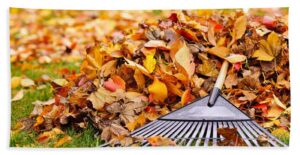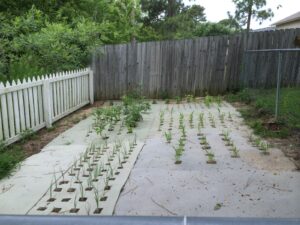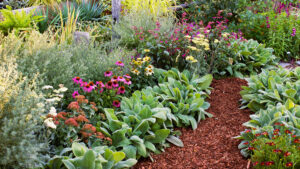6 Fall Maintenance Tips
- Cut down your grass
During the hot summer months, you want to keep your lawn height longer to help shade roots and hold in water. Come fall, set your mower to a lower setting and cut your grass shorter – keep your mower deck at a 2½- to 3-inch height. This will help dry out your soil quicker in the spring, leading to a lusher, greener lawn. If you give your yard a trim in late Fall, you won’t have to do it again until spring! Be sure not to cut your grass too short – this can impede your lawns ability to withstand the cold winter months!
- Rake your leaves!
There is a reason they call it ‘Fall’… Autumn means falling leaves. The leaves are pretty, but leaving them to decompose in your yard can prevent light and air from reaching the soil (two things your grass needs in order to make food). Contrary to common belief, fallen leaves will not help insulate your yard during the winter months. If you don’t feel like raking and the leaf cover is sparse, you can use a lawn mower to mulch the leaves and break them down into a lawn-healthy mulch. If you don’t rake up the leaves, come spring the grass under that soggy, decaying mat will be dead.

- Clean your Gutters
This is a chore best saved for late fall – after the trees have lost their leaves. A perfect time to clean those gutters is while you’re hanging holiday lights – you’re up on a ladder anyway! Check your gutters and give them a thorough cleaning while you’ve already got the ladder out. You don’t want clogged gutters when winter storms roll in. Clogged gutters can cause water to pool during storms (or after the snow melts) which in turn can cause damage to your roof and siding. Ensure they are draining properly, clear out any blockages with a small garden spade and rinse with a hose to prevent ice dams in winter – or overflowing gutters when Spring Showers strike!
- Trim Trees, bushes and Shrubs
The early days of autumn are the best time for trimming. You can more easily identify which limbs are dead while they still have some leaves on them! Make sure to do this chore before the ice storms of winter hit – the added weight of the ice and snow on the branches can cause breakage – posing a safety issue for your home and family. Clean up shrubs and branches near your house (3’ clearance is suggested to help prevent pest issues, broken windows and roof damage). Not only is it a safety issue, but pruning in the fall also encourages growth in the spring!

- Plan ahead for next year
Take advantage of the nicer weather (before the first frost!) and cooler working conditions by getting your garden ready for spring… in the fall! Re-edge flower beds that have seen better days, pull weeds and dead (or dying) plants. Add mulch and fertilizer. Doing this in the Fall Vs. spring means you are less likely to disrupt new growth and seedlings come spring.
Your trees, perennials and even shrubs can all benefit from autumn rains. Take the time to get these properly established so they have a head start for the spring. Perennials and spring bulbs should be planted before the end of October, and trees and shrubs should be planted (or transplanted) well before the first freeze. Now is also a great time to start that fall garden! Here is a great list of some plants that will thrive in the fall months!
Consider adding a weed proof fabric like WeedEnder around your trees, under mulch in your flower beds and even in your vegetable garden plots. While a more expensive initially than your standard ‘landscaping fabric’, WeedEnder is made from 100% recycled materials, and will last up to 20 years –saving you 50% in the long run. Simply install it one time and kiss the hours spent on weeding and upkeep goodbye! Not only that, but it will help keep water IN and won’t cause runoff or excess water loss (perfect for hardscaping or drought climates).


- Seed to fill in bare and burned spots.
Heat, excessive playing and animals can all wreck havoc on your lawn during the summer. It’s not uncommon for dead patches to appear after a long summer of outdoor activities. Not only is this unsightly, but it will also allow more weeds to grow in your lawn. Thick, lush grass can help prevent weeds from taking over your yard. It’s a good idea to reseed these areas in the fall because the ground is still warm, moisture is plentiful and the sun wont scorch your tender new grass during the day. Use a garden rake to loosen the soil in the bald spots, then spread seed generously over the area. Be sure to keep your soil moist- try to ensure you water at least once a day until your grass reaches a mowing height.



